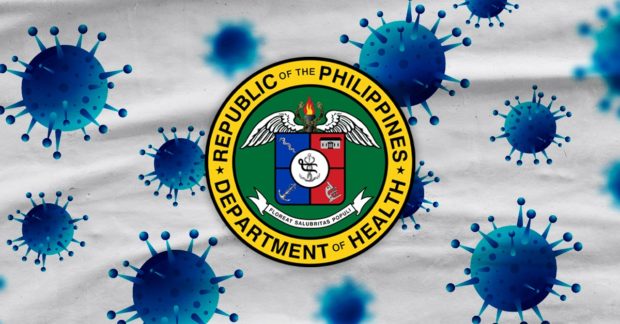Omicron community transmission already happening, says Solante
MANILA, Philippines — The community transmission of Omicron variant is already ongoing, an infectious disease expert said on Saturday as he recommended placing some areas under higher alert levels based on assessments by the Department of Health (DOH).
Dr. Rontgene Solante, chief of the Adult Infectious Diseases and Tropical Medicine Unit at the government-run San Lazaro Hospital in Manila, said the sudden increase in COVID-19 cases over the past few days led him to such a conclusion.
“In our situation now, with the enormous number of people being positive with just a short duration of time and most of them are manifesting with upper respiratory track symptoms, I would say there is already community transmission of [the] Omicron variant,” Solante said at the Laging Handa briefing.
The DOH on Friday said Omicron may be “a variant of concern” but that the earlier Delta variant remained the “most transmissive’’ of the coronavirus variants so far discovered.
But Solante noted that Omicron has turned out to be three to five times more transmissible than Delta, hence the uptick in infections.
Article continues after this advertisement“That’s why we are seeing a lot of these positives now not only in the community. We’re also seeing a lot of these in the health-care facilities,” he said.
Article continues after this advertisementSolante called for tighter restrictions in areas with a high number of cases.
“I think we know the escalation to a higher alert level will always be dictated by the number of cases. I mean, with the hospital facilities now, shortage of health-care workers, and most of those patients with high transmissibility in the community, then I would think, in my opinion, we need a higher level than what we have now,” he said.
Metro Manila, which consistently reports the highest number of new COVID-19 cases daily compared to other regions, is under alert level 3 until Jan. 15.
Under the same alert level are the provinces of Cagayan, Bataan, Pampanga, Zambales, Bulacan, Cavite, Rizal, Laguna and Batangas, as well as the cities of Baguio, Dagupan, Santiago, Lucena, Olongapo, Angeles, Naga, Iloilo and Lapu-Lapu.
Solante also noted a rise in severe and critical cases, including individuals who have been fully vaccinated but are immunocompromised. But the current spikes have yet to the reach the same level as that of the Delta-driven surge in August and September last year, he added.
PGH situation
The Philippine General Hospital (PGH) said its intensive care unit beds for COVID-19 patients were already 100-percent-occupied and overall bed usage for COVID-19 patients was now 80 percent. Dr. Jonas del Rosario, the PGH spokesperson, said the hospital had 255 COVID-19 patients as of Saturday, having converted some wards to accommodate more of such patients.
Del Rosario noted that some “non-COVID” patients were eventually infected with the coronavirus because of their proximity to those with COVID-19.
“Since we are a COVID referral center and many of our patients have non-COVID concerns and they get COVID along the way, we still accept them, which is why it is expandable as per need basis,” he said also at the Laging Handa briefing.
According to the doctor, some patients who were already vaccinated for COVID-19 were hospitalized due to other illnesses—and became positive for COVID-19 as well. “But it was not really COVID that worsened their condition but their other illness,” Del Rosario explained.
The PGH is also having fewer patients requiring the use of ventilators or who had to be intubated, he added.
Some 250 PGH workers have been infected with COVID-19, Del Rosario said.
New single-day high
The DOH on Saturday reported a new single-day high of 26,458 new infections, raising the total number of active cases in the country to 102,017.
The latest daily tally surpassed the record set on Sept. 11, 2021, when 26,303 new cases were reported.
It also showed the positivity rate, or the percentage of individuals who tested positive, hitting 43.7 percent. The percentage was based on the 77,004 tests conducted on Thursday.
The DOH said 26,277, or 99 percent, of new infections were recorded within the past two weeks.
There were 1,656 new recoveries, which means a total of 2,782,723 have survived the disease.
The number of new fatalities reported on Saturday—265—was also the highest since Nov. 19, 2021, when 277 deaths were logged, and also pushed the national COVID-19 death toll to 52,135. With the total caseload reaching 2,936,875 on Saturday, it is likely that it will hit 3 million “next week,’’ according to Dr. Guido David of the OCTA Research Group.
The DOH said most of the latest infections were recorded in Metro Manila (16,139), Calabarzon (5,387), and Central Luzon (2,281).
